Secrets of the New Forest – and where to spot its elusive wildlife
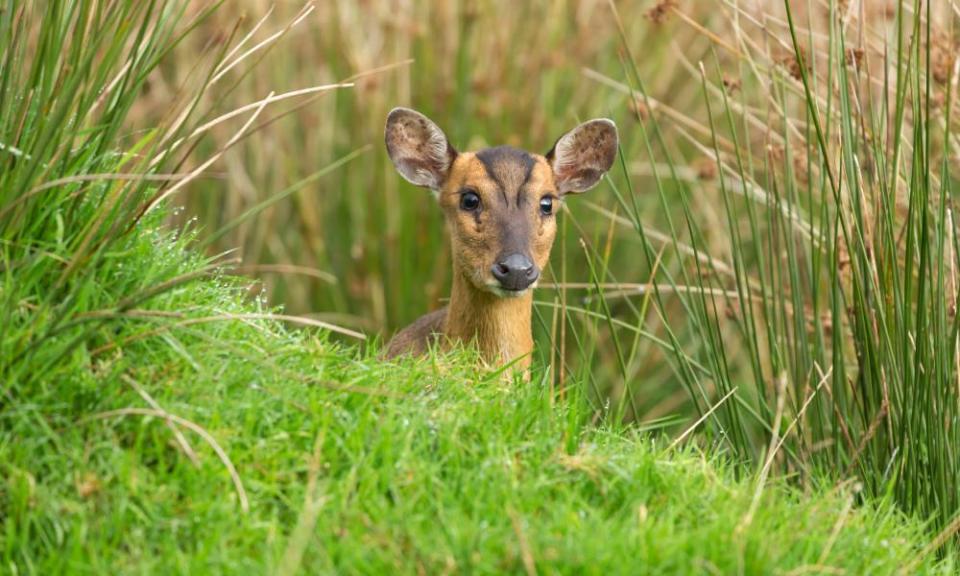
If you were to blindfold me and drop me unexpectedly almost anywhere in the New Forest, I think I would know, the moment I unmasked myself, where I had arrived. It is such a distinctive landscape, with its unmistakable blend of wide-open pasture woodland filled with ancient trees and dead wood, swathes of gently rolling lowland heath studded with grazing ponies, winding streams of red-tinged water, and boggy hollows in valley bottoms.
It is a landscape in which I instinctively feel an immediate sense of belonging. I grew up not far away, and visited regularly throughout my childhood, so the place is filled with early memories of wandering in the unfenced forest and seeing birds and animals I had no hope of spotting at home. As soon as I was old enough, I would come to camp and explore alone.
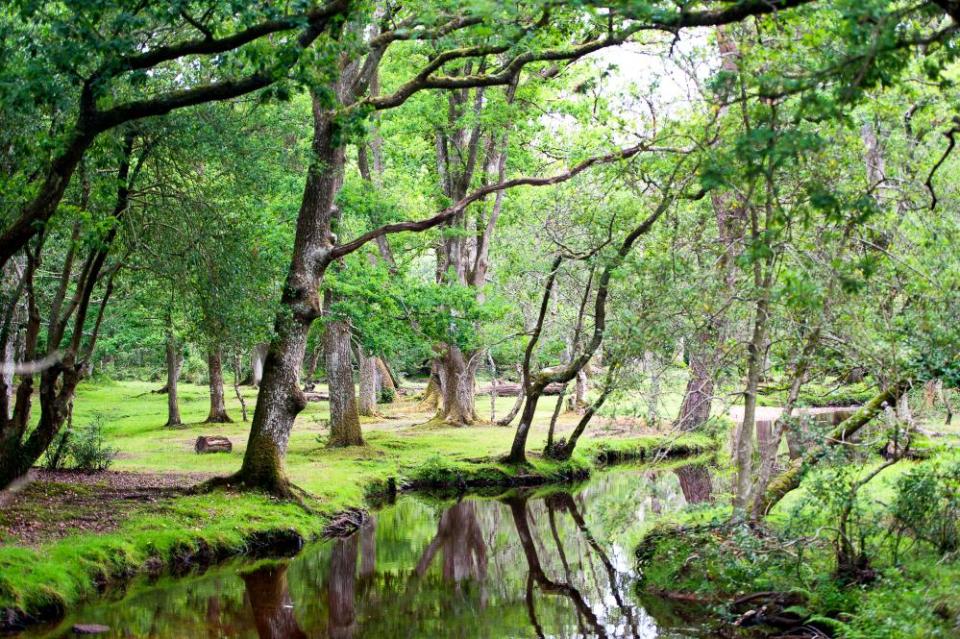
One side of my family originated from here; they were New Forest Gypsies. Gypsies lived peaceably alongside commoners in the forest for some 500 years, until the 1920s when they were rounded up and compelled to live in a small number of designated compounds. A generation later they were evicted from the forest, most ending up in the newly built council estates of the neighbouring cities.
When I left home as a teenager, my travels took me all over the country, and the world, but never back home. Yet finally, a lifetime later, and with my own children growing up, I began to feel the call of the past. I determined that over the course of a year I would spend as much time as I could in the forest, revisiting my childhood haunts and beyond, and recording what I found. In all, I visited about 30 times, an exercise that I most conveniently completed just a week or two before the first lockdown began.
It is rich in species of plants and animals that are in steep decline elsewhere, and in some cases absent
This is by no means an entirely natural landscape, though it has changed little since it was first designated as a hunting forest by the invading Normans 1,000 years ago, and possibly for much longer still. It is in effect one huge fenceless communal farm, where commoners (residents of the forest who still practise the ancient “rights of common”, such as the right to pasture livestock) graze ponies and cattle – and pigs too, in autumn. Centuries ago, before the Enclosure Acts, a third of England was common land and would have looked much more like this than it does today.
And yet while this is a working landscape, it is incredibly welcoming to wildlife. Its three key habitats, of pasture woodland, lowland heath and valley mire, have all but vanished over most of the country. It is rich in species of plants and animals that are in steep decline elsewhere, and in some cases absent. This is a place of superlatives: the greatest concentration of ancient trees in western Europe; three-quarters of its remaining valley mires – all drained away elsewhere to make way for farmland; the greatest diversity of lichens and fungi; three-quarters of Britain’s dragonfly species; and a place of last resort for specialised birds such as Dartford warblers and woodlarks, hobbies and honey buzzards.
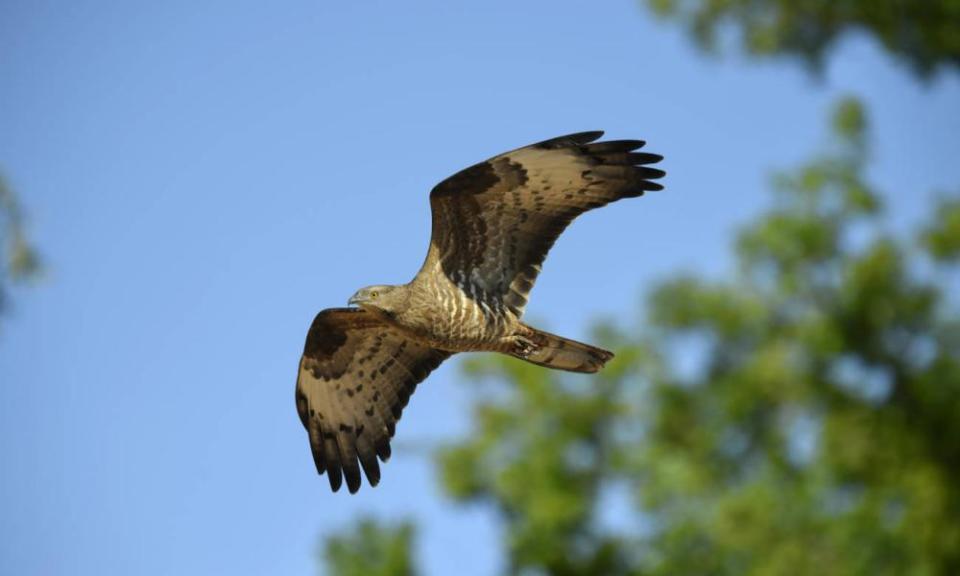
More than 200 square miles of the forest have been a national park since 2005, and attract a lot of visitors, especially in the summer holidays, as they are more accessible to large population centres than many of our parks. Having a car is not vital; there are good rail and bus links, and I conducted my year of visits entirely using public transport. There is also a fantastic network of cycle paths, with bicycles for hire in the larger villages. Many visitors stay in the forest’s well-equipped villages, or in the vicinity of the car parks by noted beauty spots such as Bolderwood and the Rhinefield Ornamental Drive, or the tourist attractions of Exbury Gardens or Bucklers Hard.
But it is easy to get away from the crowds. You don’t have to walk far for the number of people to thin out. Take a trail into the woods, and when paths diverge choose the path less travelled. By doing this you will quickly find yourself alone in the woods with the wildlife. Walk quietly, and walk slowly: you will see much more this way. I have often found myself lost in a quiet spot deep among the trees, staring into the orange eye of a goshawk or face to face with a secretive muntjac.
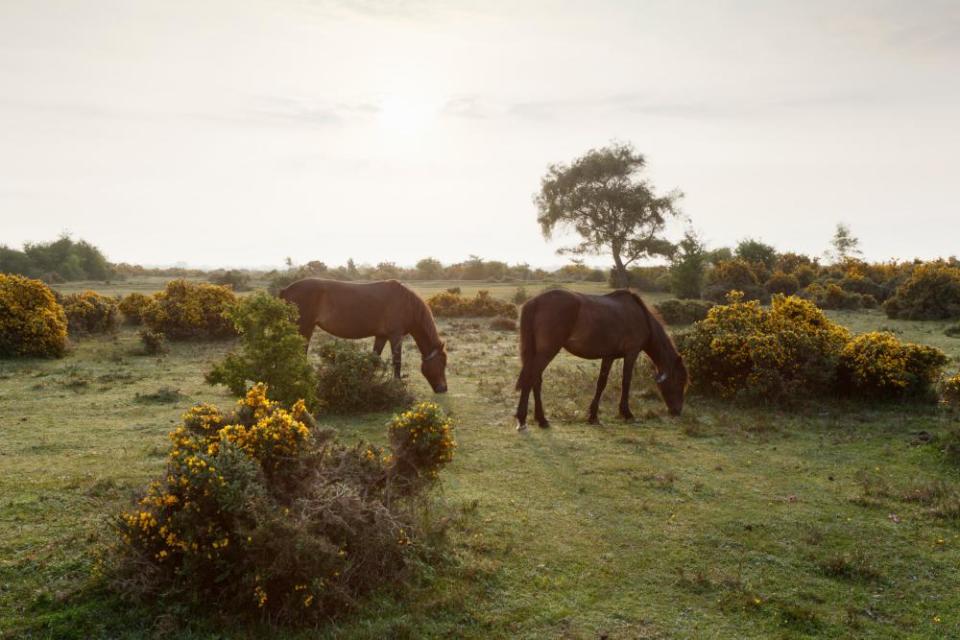
Head out on the vast expanse of the open heathland, away from the roads, and you’ll have them to yourself – just you and the larks and stonechats. Or leave the trail altogether and follow a winding stream into the woods, sit on the bank and wait for a kingfisher, or possibly a mandarin duck, to pass by. The upper reaches of Bartley Water to the west of Ashurst, or Highland Water west of Lyndhurst, twist and turn through the woods, deep channels overhung by trees, while the upper reaches of the Beaulieu River have a fringe of trees, but head right out over the heaths and bogs. There are many tiny streams that trickle out of the bogs and mires, and because the forest is uncultivated, these are some of the healthiest freshwater habitats in the country.
My favourite thing to do is to head to where the woods meet the heath and wait for dusk
You will inevitably see plenty of commoners’ livestock, and have a good chance of seeing fallow and roe deer. But many of the gems of the forest may be harder to find; in truth, you have to be in the right place at the right time. To focus on the summer: from late June the heaths may light up with the white, purple and pink spikes of the heath spotted-orchid. The greatest concentration I found was at Matley Heath southeast of Lyndhurst. Around the same time, look out for the silver-studded blue butterflies. These are a nationally scarce species as they live only on lowland heath, yet colonies here can number in the hundreds or even thousands – and they make for a spectacular sight. The best location I found was on the heath south of Longdown Inclosure.
August may be the worst time of the year for birds – most go into moult after the nesting season – but the heather will be in full bloom, and this is the best month for dragonflies. Possibly the best location of all is Upper Crockford stream, in the far south of Beaulieu Heath. My favourite thing to do is to head to where the woods meet the heath and wait for dusk, listening out for the strange mechanical churring of the nightjar. If you’re lucky, you may see them, swooping after moths in the half-light.

Of course, the other seasons have their highlights too: birdsong and arriving migrants in the spring, autumn colours and fungi that reveal the forest at its most beautiful, and in winter vast flocks of waders and winter wildfowl that arrive at Keyhaven and Pennington Marshes on the New Forest coast. You may have places that seemed busy in the summer almost to yourself, especially if the weather is less than ideal. Don’t be put off: pack your wellies and a raincoat and be prepared to get muddy.
The New Forest: how to do it
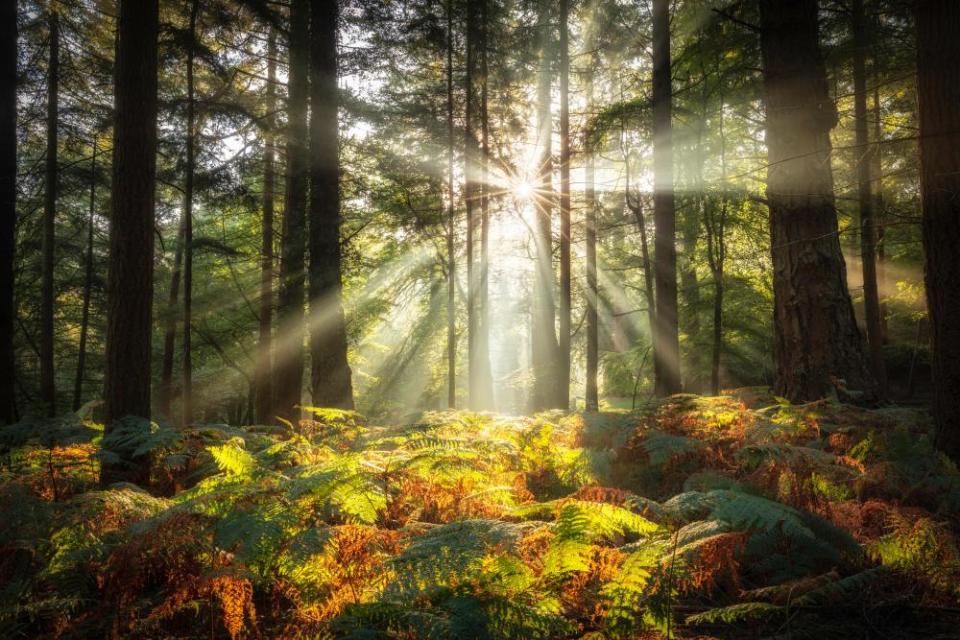
If you have a few days to hand, why not try to track down some of the most imposing of the forest’s ancient trees. Look around Balmer Lawn near Brockenhurst for ancient oaks, or Mark Ash Wood near Bolderwood for ancient beeches. There is also an isolated clump of ancient beeches out on the heath; the Soarley Beeches are close to the lovely Berry Wood near Burley Street, a location I am particularly fond of as it is the first place in the forest I camped as child – back when wild camping was still allowed. As a shortcut to find some of the biggest trees of all, the New Forest Explorers Guide highlights some of the best.
There are fabulous routes to walk in every corner of the forest, but here are a couple of suggestions that, as well as being great for nature watching, also give a glimpse into parts of the forest’s little-known history. Look at your map, and you will see that the entire forest is studded with signs of occupation, from bronze-age barrows and boiling mounds, to the ruins of royal hunting lodges and Norman earthworks, to wartime relics.
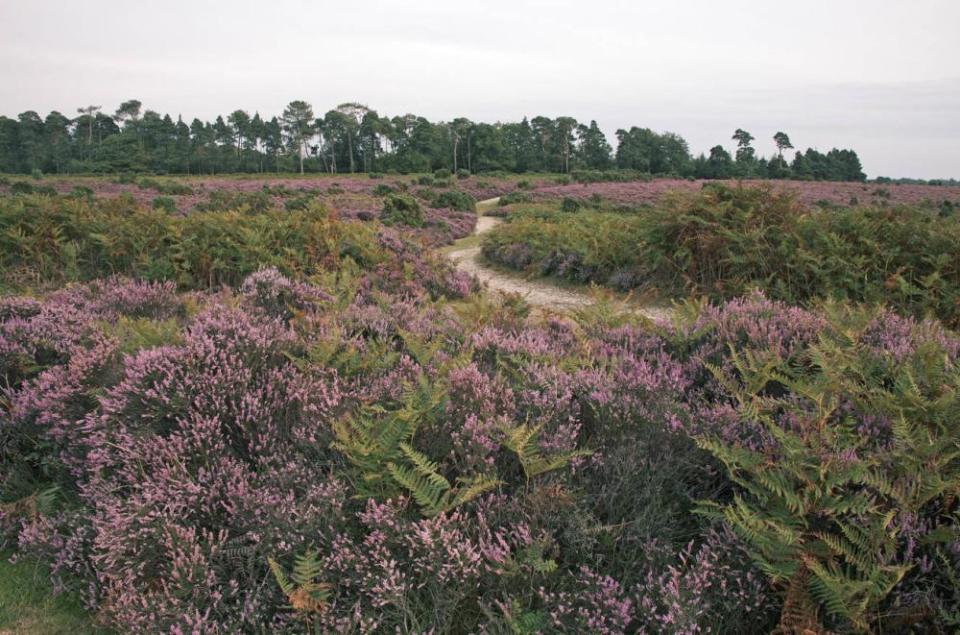
Hampton Ridge in the north-west of the forest offers great long views – and take a look at the many gorse brakes, for this is one of the best locations for the elusive Dartford warbler. The ridge overlooks Ashley Walk, site of a wartime bombing range, and the heath is dotted with bomb craters and unexpected wartime relics, including a 30-metre-long concrete arrow, a directional marker for approaching pilots. And keep an eye to the sky – not for bombers, but for the forest’s array of birds of prey.
Setley Plain, just south of Brockenhurst, is the site of a prisoner of war camp, the traces of which can still be seen. First it housed Italian and German prisoners of war, and then, when the second world war was over, it housed Gypsies displaced from their compounds, all in a series of Nissen huts. Look out for the woodlark, another scarce species that has its heartland in the New Forest. It is not much to look at, but it has the most beautiful of songs. If you then head west along the disused railway track you will come to a causeway that leads right across the valley mire at Hincheslea Bog, a rare opportunity to take an inside look at this extraordinary habitat.
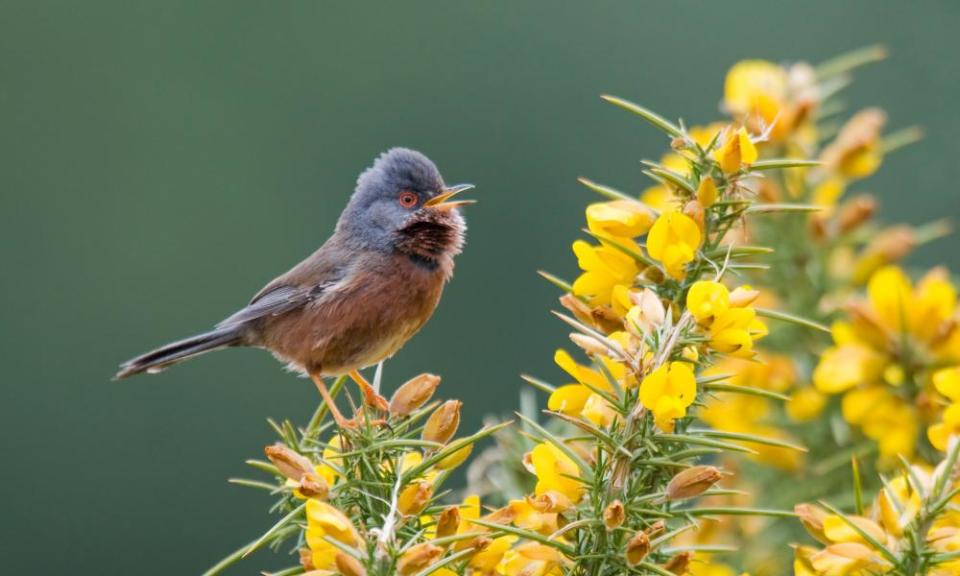
If you’re struggling to make much headway with the forest’s elusive wildlife and want help, Wild New Forest offers guided walks with extremely knowledgable local naturalists.
Where to stay
Wild camping is no longer permitted in the forest, but there are 10 campsites in the national park, and although some of these are designed for the owners of mobile homes, four are suitable for tents. Hollands Wood Campsite is close to the facilities of Brockenhurst at Balmer Lawn, home to many huge ancient oaks. But my personal favourite is Ocknell campsite, tucked away among the woods at the heathland edge in the north-west of the forest. It has good walking in every direction, and is also the cheapest, at £13.95 a night for two adults.
All of the forest’s villages have a selection of inns and hotels, but for somewhere a little more out in the wilds I recommend the Beaulieu Inn, which is surrounded by heaths adjacent to Beaulieu Road train station, but in easy reach too of beautiful woodland – a great base for walking. It also has its own pub and restaurant, the Drift Inn. Rooms from £122 a night.
Eat
The forest is full of country pubs serving locally sourced food. Two that come highly recommended are the Foresters Arms at Frogham and the Royal Oak at Fritham – both, coincidentally, in easy reach of the Hampton Ridge Walk. Not that I would possibly suggest turning this lovely walk into a pub crawl.
My idea of eating out in the forest has tended to be a sandwich and a bottle of water while sitting on a fallen log in the woods, but I did once treat myself to a gourmet meal at the Crown Manor House Hotel in Lyndhurst, and very good it was too, even for an awkward vegan.
Neil Ansell is the author of The Circling Sky: On Nature and Belonging in an Ancient Forest, out now (Tinder Press, £18.99). Buy it for £16.52 at guardianbookshop.com

 Yahoo Finance
Yahoo Finance 